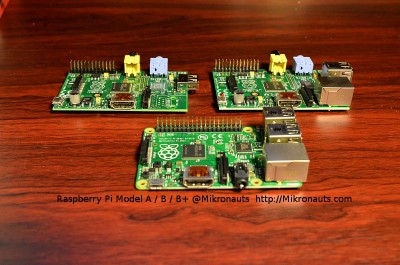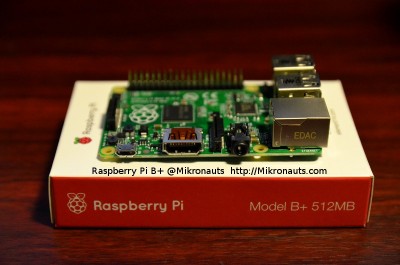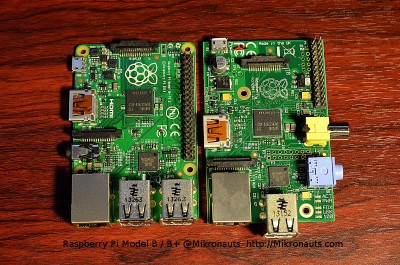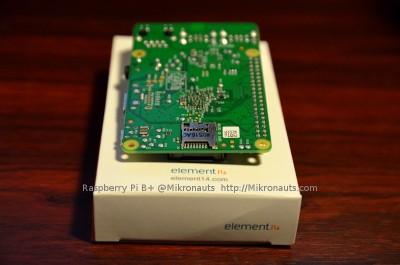Raspberry Pi Model B+ Review
Improved Audio Quality
(Click for larger image. Raspberry Pi Left: Model A Center: Model B+, Right: Model B)
I have personally not tested this yet, as so far I’ve been using audio over HDMI for my desktop Pi’s, and no audio output for my Pi bots.
(Click for larger image. Raspberry Pi Model B+ combined audio/video jack is to the right of the HDMI jack)
Personally, I’d have preferred keeping the video separate, but I do understand the printed circuit board space savings that were made by combining the analog audio and video connectors.
Now I’ll just have to go and by some Apple or Zune style AV cables…
Improved Board Layout
My favourite improvement as far as board layout goes are the great new mounting holes as they will make it much easier to solidly mount the Raspberry Pi Model B+, and I also like how the USB and Ethernet connectors stick out far less from the main board.
(Click for larger image. Raspberry Pi Model B+ (left) has MUCH better mounting holes than Model B (right))
The mounting holes nice regular rectangular pattern does have one unfortunate side effect – all previous add-on boards can fit in the first 26 pins of the new 40 pin connector, however they will be offset approximately 9mm, and will not fit exactly on top of the new Model B+ however this was unavoidable due to the position of the new mounting holes, and in my opinion, was a price well worth paying.
I don’t particularly like the four conductor 3.5mm headphone jack for combined audio and video, however as I have yet to use NTSC video from the Pi, or analog audio, it really makes little difference to me. The rounder PCB corners may save little fingers from being poked by sharp corners, but do increase PCB production time for board houses.
Software Compatibility
There have been a number of reports of Raspberry Pi Model B + USB incompatibilities and issues.
In my opinion, these reports are not valid.
This is a new board, and requires new drivers for the USB/Ethernet hub chip.
(Click for larger image. Raspberry Pi Model B+ has a nice small uSD socket)
It is possible to use an existing, configured SD card from the previous Model A and Model B Raspberry Pi’s – BUT you must update & upgrade them as per the instructions from the Pi Foundation.
This also applies to existing stocks of the “NOOBS” SD card that vendors may have in stock, which have not been updated.
To solve this issue, update & upgrade the SD cards in an existing Model A or Model B, or better yet, download the latest NOOBS and make a new card.
I sidestepped any compatibility issues by downloading the NOOBS network install, and installing Raspbian from that. This was a painless experience!
Other than the firmware /boot files, I have not run into any software incompatibilities between the earlier Raspberry Pi’s and the new Model B + however that is no guarantee that some issues will not surface in the future.
(NOTE: The latest NOOBS requires an 8GB SD card)



